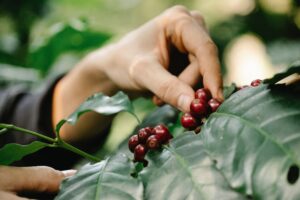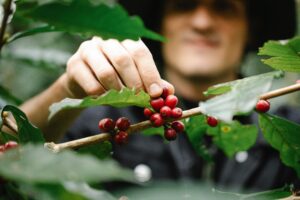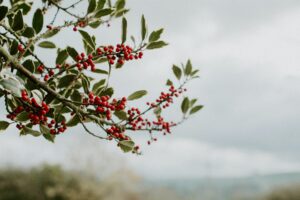Service Berry

Service Berry
Amelanchier (/æməˈlænʃɪər/ am-ə-LAN-sheer), also known as shadbush, shadwood or shadblow, serviceberry or sarvisberry (or just sarvis), juneberry, saskatoon, sugarplum, wild-plum or chuckley pear, is a genus of about 20 species of deciduous-leaved shrubs and small trees in the rose family (Rosaceae).
Amelanchier is a known native to temperate regions of the Northern Hemisphere, growing primarily in early successional habitats. It is most diverse taxonomically in North America, especially in the northeastern United States and adjacent southeastern Canada, and at least one species is native to every U.S. state except Hawaii and to every Canadian province and territory. Two species also occur in Asia, and one in Europe. The taxonomic classification of shadbushes has long perplexed botanists, horticulturalists, and others, as suggested by the range in number of species recognized in the genus, from 6 to 33, in two recent publications. A major source of complexity comes from the occurrence of hybridization, polyploidy, and apomixis (asexual seed production), making species difficult to characterize and identify.
The various species of Amelanchier grow to 0.2–20 m tall; some are small trees, some are multistemmed, clump-forming shrubs, and yet others form extensive low shrubby patches (clones). The bark is gray or less often brown in color, and in tree species smooth or fissuring when older. The leaves are deciduous, cauline, alternate, simple, lanceolate to elliptic to orbiculate, 0.5–10 x 0.5–5.5 cm, thin to coriaceous, with surfaces above glabrous or densely tomentose at flowering, and glabrous or more or less hairy beneath at maturity. The inflorescences are terminal, with 1–20 flowers, erect or drooping, either in clusters of one to four flowers, or in racemes with 4–20 flowers. The flowers have five white (rarely somewhat pink, yellow, or streaked with red), linear to orbiculate petals, 2.6–25 mm long, with the petals in one species (A. nantucketensis) often andropetalous (bearing apical microsporangia adaxially). The flowers appear in early spring, “when the shad run” according to North-American tradition (leading to names such as “shadbush”). The fruit is a berry-like pome, red to purple to nearly black at maturity, 5–15 mm diameter, insipid to delectably sweet, maturing in summer. Amelanchier plants are valued horticulturally, and their fruits are important to wildlife.
Some of the Selected species
Amelanchier alnifolia
For North American species, the taxonomy follows the Flora of North America; for Asian species the Flora of China; and for the one European species the Flora Europaea.
Amelanchier alnifolia – Saskatoon serviceberry, alder-leaved shadbush, saskatoon, saskatoon berry
Amelanchier arborea – downy serviceberry
Amelanchier asiatica – Korean juneberry or Asian serviceberry
Amelanchier australis
Amelanchier basalticola
Amelanchier bartramiana – mountain shadbush
Amelanchier canadensis – Canada serviceberry, shadblow serviceberry, bilberry, eastern shadbush, Indian pear
Amelanchier humilis – low shadbush
Amelanchier interior – Wiegand’s shadbush
Amelanchier intermedia
Amelanchier laevis – smooth shadbush, smooth serviceberry, Allegheny serviceberry
Amelanchier lamarckii – Juneberry
Amelanchier nantucketensis – Nantucket serviceberry
Amelanchier obovalis – Southern Juneberry, Coastal serviceberry
Amelanchier ovalis – snowy mespilus
Amelanchier pallida – pale serviceberry or western serviceberry
Amelanchier parviflora
Amelanchier sanguinea – red-twigged shadbush or roundleaf serviceberry
Amelanchier sinica – Chinese serviceberry
Amelanchier spicata – low juneberry, thicket shadbush, dwarf serviceberry, or low serviceberry
Amelanchier stolonifera – running serviceberry
Amelanchier utahensis – Utah serviceberry
Garden hybrids
Since classifications have varied greatly over the past century, species names are often used interchangeably in the nursery trade. Several natural or horticultural hybrids also exist, and many A. arborea and A. canadensis plants that are offered for sale are actually hybrids, or entirely different species. A. × grandiflora is another hybrid of garden origin, between A. arborea and A. laevis.
A taxon called Amelanchier lamarckii (or A. x lamarckii) is very widely cultivated and naturalized in Europe, where it was introduced in the 17th century. It is apomictic, breeding true from seed, and probably of hybrid origin, perhaps descending from a cross between A. laevis and either A. arborea or A. canadensis. While A. lamarckii is known to be of North American origin, probably from eastern Canada, it is not known to occur naturally in the wild in North America.
Etymology
The origin of the generic name Amelanchier is probably derived from amalenquièr, amelanchièr, the Provençal names of the European Amelanchier ovalis. The name serviceberry comes from the similarity of the fruit to the related European Sorbus.
A fanciful etymology explains the name ‘serviceberry’ by noting that the flowers bloom about the time roads in the Appalachian mountains became passable, allowing circuit-riding preachers to resume church services. A similar etymology says that blooming serviceberry indicated the ground had thawed enough to dig graves, so burial services could be held for those who died in the winter when the only way to deal with the bodies was to allow them to freeze and wait for spring. Both of these fanciful etymologies are unlikely to be correct since the term is attested for both English and New World species as early as the 16th century, well before settlement of English North America, and serviceberry is far from unique in blossoming early in the year.
Juneberry refers to the fruits of certain species becoming ripe in June. The name saskatoon originated from a Cree noun misâskwatômina (misāskwatōmina, misaaskwatoomina) for Amelanchier alnifolia. The city of Saskatoon, Saskatchewan, is named after this plant.
Shadberry refers to the shad runs in certain New England streams, which generally took place about when the trees bloomed.
Ecology
Amelanchier plants are preferred browse for deer and rabbits, and heavy browsing pressure can suppress natural regeneration.
Caterpillars of such Lepidoptera as brimstone moth, brown-tail, grey dagger, mottled umber, rough prominent, the satellite, winter moth, and the red-spotted purple and the white admiral (both Limenitis arthemis), as well as various other herbivorous insects feed on Amelanchier. Many insects and diseases that attack orchard trees also affect this genus, in particular trunk borers and Gymnosporangium rust. In years when late flowers of Amelanchier overlap those of wild roses and brambles, bees may spread bacterial fireblight.
Uses and cultivation
Fruit and leaves of Amelanchier ovalis
The fruit of several species are excellent to eat raw, sweetish, and strongly accented by the almond-like flavour of the seeds. Selections from Amelanchier alnifolia have been chosen for fruit production, with several named cultivars. Other cultivars appear to be derived from hybridization between A. alnifolia and A. stolonifera. Propagation is by seed, divisions, and grafting.
Serviceberries graft so readily that grafts onto other genera, such as Crataegus and Sorbus, are often successful. The fruit can be harvested for pies, muffins, jams, and wine. The saskatoon berry is harvested commercially. One version of the Native American food pemmican was flavored by serviceberry fruits in combination with minced dried meat and fat.
The wood is brown, hard, close-grained, and heavy. The heartwood is reddish-brown, and the sapwood is lighter in color. It can be used for tool handles and fishing rods. Native Americans used it for arrow shafts. Members of the Pit River Tribe would use the wood to create a sort of body armor, crafting it into a heavy robe or overcoat and corset armor worn during fighting.
Garden history
Several species are very popular ornamental shrubs, grown for their flowers, bark, and fall color. All need similar conditions to grow well, requiring good drainage, air circulation (to discourage leaf diseases), watering during drought, and soil appropriate for the species.
George Washington planted specimens of Amelanchier on the grounds of his estate, Mount Vernon, in Virginia.
Service berry Care
Successfully growing service berries requires carefully balancing several factors: heat, light, and fertilization. Plants that are over-fertilized and grown in warm conditions, but not given enough light, will stretch out looking for more. Plants that are given too much light without a corresponding increase in fertilizer and water will scorch. The right balance indoors likely means a bright corner, with plenty of water, and less fertilizer than you probably think.
Service berry has a reputation for being somewhat of a temperamental plant. Although service berrys are understory plants in their natural habitat, indoors it’s a good idea to provide as much light as possible. Plants that are stretching and bleached should be moved into a brighter spot for a few weeks, but don’t expose them to full sunlight.
Soil
These palms are acid-loving plants that do best with a pH level as low as 5.0, so don’t worry about a peat-based mixture acidifying and hurting your service berry. A standard potting mix, with some extra peat mixed in, is an ideal growing medium for service berrys1. These palms need good drainage to prevent water-logged roots.
Water
Keep the potting media evenly moist, but not waterlogged. Don’t let the plant’s soil get too dry between watering or you’ll start to lose lower leaves.
Temperature and Humidity
This plant will grow fairly well in temperatures between 65 and 85 degrees Fahrenheit. It prefers high humidity but can survive in ordinary household humidity levels. In colder climates where winter air can get very dry; running a humidifier can make the plants happier. Misting the plant daily will also ensure it gets the humidity it craves. Low humidity levels can encourage insect pests.
About Pleasant Grove, Utah
Pleasant Grove, originally named Battle Creek, is a city in Utah County, Utah, United States, known as "Utah's City of Trees". It is part of the Provo–Orem Metropolitan Statistical Area. The population was 37,726 at the 2020 Census.
Neighborhoods in Pleasant Grove, Utah
Wheeler Village Unit One, Wheeler Village Unit Two, Allen Taylor, West Property, Sunset Meadows, Kanesville, Stillcreek, Wilson, Sunset Meadows, Westwood Manor Plat Two, West Park, Lee Olsen Park, West Ogden, Lions Club Park, Plain City Park, County Line Trailhead, Kent's Market, Warren, Harrisville, Apple Park
Things To Do in Pleasant Grove, Utah
Bus Stops in Pleasant Grove, Utah to Truco Services, Inc.
Bus Stop in Main St @ 150 S Pleasant Grove, Utah to Truco Services, Inc.
Bus Stop in 100 E @ 1453 N Pleasant Grove, Utah to Truco Services, Inc.
Bus Stop in State St @ 810 W Pleasant Grove, Utah to Truco Services, Inc.
Bus Stop in State Rd @ 1291 W Pleasant Grove, Utah to Truco Services, Inc.
Bus Stop in State St @ 1084 E Pleasant Grove, Utah to Truco Services, Inc.
Bus Stop in State Rd @ 789 S Pleasant Grove, Utah to Truco Services, Inc.
Bus Stop in State St @ 765 N Pleasant Grove, Utah to Truco Services, Inc.
Bus Stop in State St @ 611 N Pleasant Grove, Utah to Truco Services, Inc.
Bus Stop in State Rd @ 100 E Pleasant Grove, Utah to Truco Services, Inc.
Bus Stop in Center St @ 585 W Pleasant Grove, Utah to Truco Services, Inc.
Bus Stop in State St @ 930 E Pleasant Grove, Utah to Truco Services, Inc.
Bus Stop in State Rd @ 1344 W Pleasant Grove, Utah to Truco Services, Inc.
Driving Directions in Pleasant Grove, Utah to Truco Services, Inc.
Driving Directions from Family Tree Services LLC to 4640 Commerce Dr, Murray, UT 84107, USA
Driving Directions from Treewise to 4640 Commerce Dr, Murray, UT 84107, USA
Driving Directions from A Plus Affordable Tree Service to 4640 Commerce Dr, Murray, UT 84107, USA
Driving Directions from Tree Wise Men, Llc to 4640 Commerce Dr, Murray, UT 84107, USA
Driving Directions from Ixta Tree Experts, Inc to 4640 Commerce Dr, Murray, UT 84107, USA
Driving Directions from Tree-Rex Tree Service, LLC to 4640 Commerce Dr, Murray, UT 84107, USA
Driving Directions from Utah Tree Works - SavATree to 4640 Commerce Dr, Murray, UT 84107, USA
Driving Directions from Davis Trees to 4640 Commerce Dr, Murray, UT 84107, USA
Driving Directions from Amen Trees to 4640 Commerce Dr, Murray, UT 84107, USA
Driving Directions from Cascade Tree Services to 4640 Commerce Dr, Murray, UT 84107, USA
Driving Directions from Utah Tree Co to 4640 Commerce Dr, Murray, UT 84107, USA
Driving Directions from Blades Tree Removal to 4640 Commerce Dr, Murray, UT 84107, USA
Reviews for Truco Services, Inc. Pleasant Grove, Utah
Marissa Burton
TruCo is a great company to work with for your commercial landscaping and snow removal needs! Rob is excellent to work with. He is very timely in providing quotes and has a lot of great feedback and suggestions to provide on what will look great, fit within your budget, and is knowledgeable on plants that will thrive with Utah's ever changing weather conditions. I have been impressed with TruCo's landscape maintenance as well as landscape projects which have had a quick turnaround time. I would highly recommend using TruCo!
Yvonne Olson
I experienced excellent all around service from landscape improvement design, scheduling and professional installation completed within the timeline we discussed. Rob, the manager does an excellent job of communicating, overseeing the install crew and making sure his customers are 100% satisfied with the job. Highly recommend TruCo for all landscaping needs.
Raymond Ferraro
Michael the tree guy is so smart. He knows all about tree removal, cutting and tree trimming services. Truco did amazing work for me. We had 16 very old and mature trees removed. The Truco team showed up on time ready to get the job done. They did amazing with clean up truly respect your property and your life. Communication was really good. They needed to move some things to get the stump grinder to our yard they put things back with no issues. Extremely professional and truly know what they're doing. If anyone is looking for professional tree removal or tree service you really should call Jason or Michael at Truco.
Heather Whiting
We hired TruCo to do a new install of sprinklers, sod, spigot, and bury downspouts. We even have a wifi transmitter for our control box we can access from an app on our phones! We absolutely love the professionalism and quality of their work!! Our sales rep Pete was the best to work with, we highly recommend him to anyone in the market for landscaping. It was awesome seeing the finished results and we're incredibly excited to enjoy our new space!
Jan Merideth
TruCo installed all of our plants, trees and shrubs, drip lines, and boulders. Then they installed our amazing beautiful firepit. We loved the results and they guarantee all plants and trees up to a year. They were great and easy to work with. They listened to our needs and wants and met them 100%. Our HOA sent us a letter telling us they appreciate all the work and the way our yard looks and let us know we added value to the property. Win/Win

